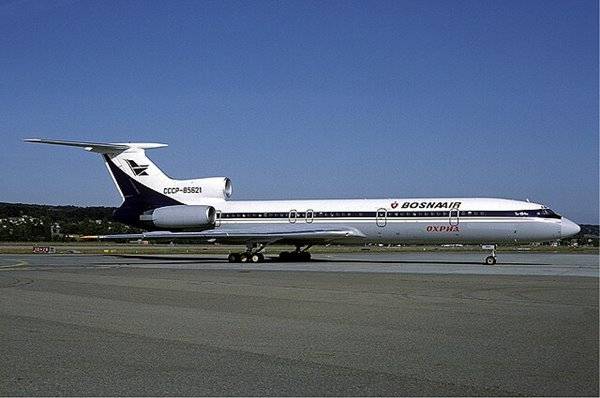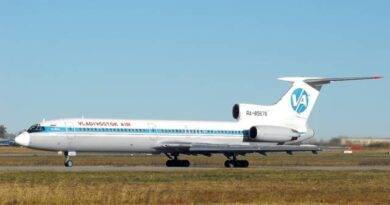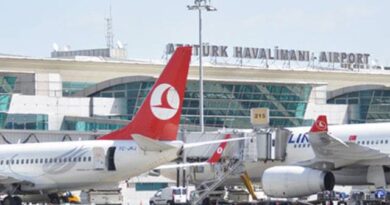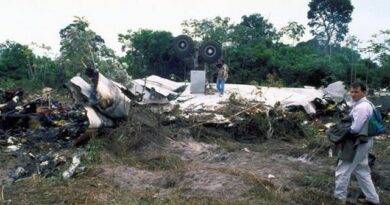Tragic Story of Vnukovo Airlines Flight 2801
Vnukovo Airlines Flight 2801 crashed on August 29, 1996, in a tragic aviation disaster. The Tupolev Tu-154M slammed into Operafjellet Mountain near Svalbard, Norway, killing all 141 passengers and crew members on board. The flight, chartered by Vnukovo Airlines, was transporting Russian and Ukrainian coal miners along with their families. They were bound for the remote Arctic coal mining settlements of Barentsburg and Pyramiden, both located in the Svalbard archipelago. The crash was devastating for the close-knit mining communities, and it marked one of the deadliest air disasters in Norway’s history. Harsh terrain and weather conditions hampered the rescue efforts, adding to the tragedy.
Flight Details and Context
The flight originated from Moscow’s Vnukovo International Airport and was destined for Longyearbyen Airport on Svalbard, a remote Norwegian territory close to the North Pole. The passengers were largely employees of the Russian state-owned mining company Arktikugol, which had extensive operations in Svalbard. The flight crew, led by Captain Evgeny Nikolaev, included an experienced crew, although the first officer had never flown to Svalbard before (Wikipedia, Life in Norway).
Crew of Vnukovo Airlines Flight 2801
The Tupolev Tu-154M was a Russian narrowbody airliner with three engines that was eight years old. Evgeny Nikolaevich, aged 44, was the captain, while Boris Fedorovich Sudarev, aged 58, was the first officer. On the flight, Igor Petrovich Akimov, 50, was the navigator, and Anatoly Matveevich Karapetrov, 38, was the engineer. There were two technicians and five flight attendants in the cabin crew.
The Aircraft: Tupolev Tu-154M (RA-85621)
The aircraft involved in the Vnukovo Airlines Flight 2801 crash was a Tupolev Tu-154M, a widely used Soviet-designed jet airliner. The registration of this particular aircraft is RA-85621. The Tu-154M model was known for its long service in both Russian and former Soviet airlines. It was a workhorse aircraft, particularly used for charter and regional flights during the 1990s. Also, the aircraft had previously flown to Svalbard for several times.

The Crash
As the aircraft approached Svalbard, it encountered poor weather conditions with low visibility, typical of the harsh Arctic environment. Communication issues between the Russian crew and Norwegian air traffic controllers played a significant role in the crash. Due to limited English proficiency and procedural misunderstandings, the crew was unable to properly request an alternative runway, instead opting to land on the designated Runway 28.
During the descent, the aircraft’s navigation system was incorrectly set, causing the plane to veer off course. The crew became disoriented, and despite multiple warnings from the ground proximity warning system, the aircraft descended into the mountain at an altitude of approximately 907 meters, just 14 kilometers from the airport (Wikipedia).
Contributing Factors
The official investigation revealed multiple factors that contributed to the crash. The crew struggled with the offset localizer approach which is a complex navigation procedure that required precise lateral control. The navigator, overwhelmed with tasks, made critical mistakes in setting the aircraft’s systems, leading to a miscalculated flight path. Furthermore, the lack of clear communication between the flight crew and air traffic control exacerbated the situation. The first officer’s transfer of control responsibility to the navigator, who was already overloaded, compounded the errors (Life in Norway).
Aftermath and Legacy
The crash remains the deadliest aviation disaster on Norwegian soil. The remote location delayed the rescue operations. In addition to this, the aircraft was completely destroyed upon impact. The disaster devastated the Russian communities in Svalbard, with the loss felt deeply in the mining towns of Barentsburg and Pyramiden.
In the wake of the accident, the investigation led to a renewed focus on improving flight safety in Arctic conditions, emphasizing the importance of proper communication, crew resource management, and better training for complex approaches. The crash also highlighted the need for stricter regulations regarding language proficiency for international flights, particularly in challenging environments like Svalbard (Wikipedia, Life in Norway).
This incident remains a somber reminder of the challenges of Arctic aviation and the importance of stringent safety protocols.
References and Further Reading:
- https://admiralcloudberg.medium.com/vnukovo-airlines-flight-2801-the-crash-that-changed-svalbard-forever-1979b8651dc4 https://www.wikiwand.com/en/Vnukovo_Airlines_Flight_2801
- image source: By Rolf Wallner – http://www.airliners.net/photo/BosnaAir/Tupolev-Tu-154M/0420691/L/&sid=27016eff4a4a11046da5bf8e42f2b51e, GFDL 1.2, https://commons.wikimedia.org/w/index.php?curid=16207872
- For more aviation accidents: https://www.aviationfile.com/aviation-accidents-and-incidents/
- By Bjørn Christian Tørrissen – Ow, CC BY-SA 3.0, https://commons.wikimedia.org/w/index.php?curid=12859744


